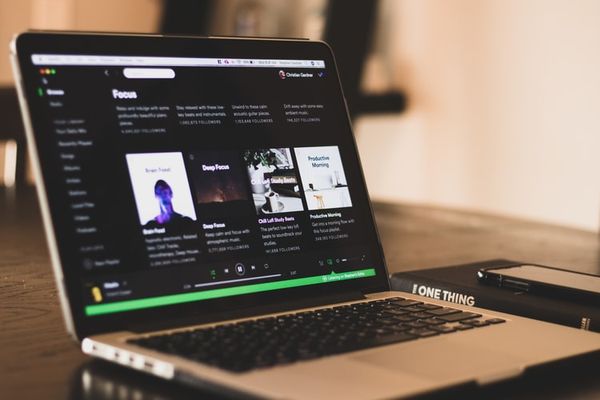Streaming services like Spotify and Apple Music have been working to deliver a listening experience that transcends the artist and the consumer—in fact, they have created services that are more social than ever.
As Furman announced an extended spring break last March, I recall being hopeful. I also recall my laptop being open with Spotify’s charcoal and green layout taking up my screen, showing little bubbles of people’s presence and the songs they were playing. In that moment, though separated by distance and by music choice, Spotify’s streaming service brought me together with others through the experience of shared listening. Since then, things have changed, and so has the role of music sharing.
Music streaming has not just made music more accessible, but it now is also easier to share with others than ever before. Although the intimacy of being in someone’s presence while listening to a song is more potent than texting someone a song, in a time where being cautious of proximity is encouraged, the value of sending someone a song or playlist has increased. That is not to say that before the pandemic music sharing was not already intimate. It was, but given today’s circumstances, it is a sweeter act of intimacy. The sentiment is caffeinated; there is a heightened jolt of intention behind it that was not there before.
Behind the scenes, however, the industry has revealed a bigger issue. Though streams make it easier for the consumer to share music, artist compensation is often not equitably allocated. In light of this, senior Elise Dudley shared, “I’ve been a lot more intentional these past few months in supporting musicians” on Venmo or by purchasing merchandise. “I would have been at the live shows before,” she says, but she has found a way to support her favorite musicians despite concert cancellations. Not only is music sharing becoming a deeper act of affection, but intention in supporting the artist you are sharing has increased in value, too.
Many people take advantage of streaming functions like playlist-creating. Dudley is doing hers in “themes.” She said, “I’ll get inspiration from random things, I think. But they’re often themed on periods of times or certain emotional experiences that I want to capture and return to.” She explains that the way she makes playlists has not changed since the pandemic, but that she has made more of them. Collaborative playlists, for example, are a function of Spotify that lets multiple people contribute songs to a playlist. Dudley described that one of her more recent playlists garnered attention from friends and some of her followers who would end up personally sending her songs that also fit the theme.
Senior Ethan Cash shared that, even though he has listened to less music since the pandemic began, he has been relying on the friends on his explore page to learn about new music. “Though my streaming was down, I felt like I was talking about music more. I’ve never been great about sitting down and tearing through music, but I have friends that are great at that. I see them do it on my explore page on Spotify, and it encourages me to listen,” he said. He went on to describe that, “now, you’re not listening to music for personal use, but to build relationships with other people.”
Perhaps this music sharing and playlist-creating experience is not a direct result of the pandemic, but what we have found is an emphasis on connection and intentionality, which, too, has certainly changed since being sent back home last March. Still, I think back to the scene I reflected on earlier, where my friends and I were connected, if not by song, then by the act of listening at the same time. Now, some of us are back on campus, while others are still at home, yet we are all listening and participating within this community at the same time, streaming into each other.
